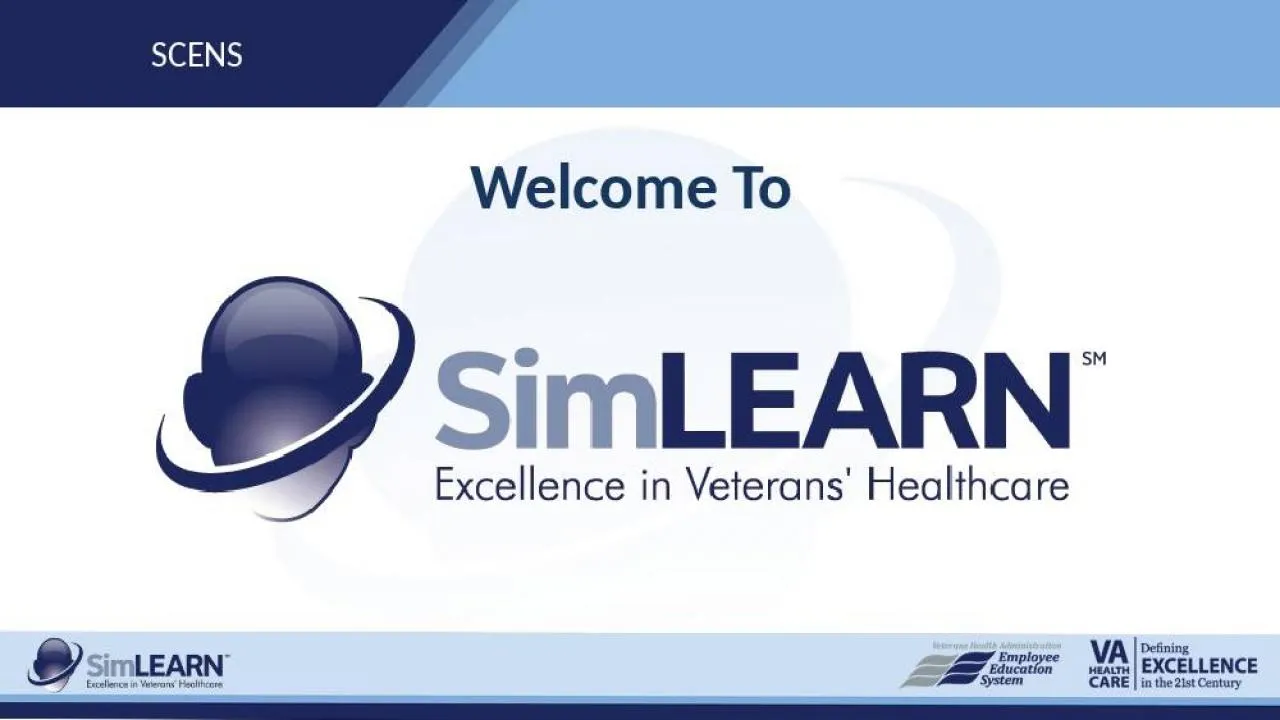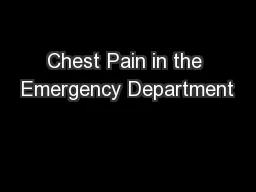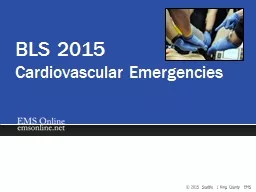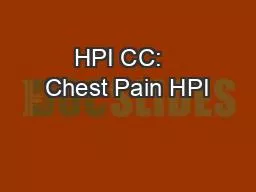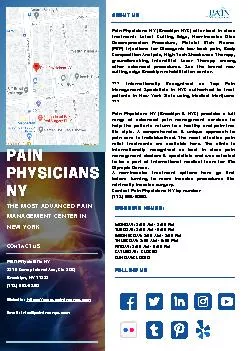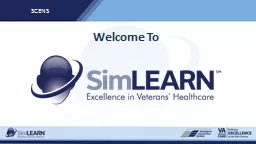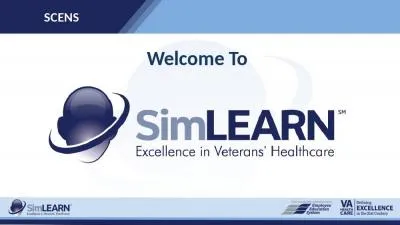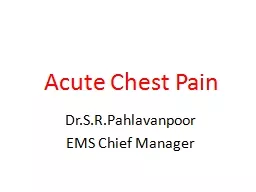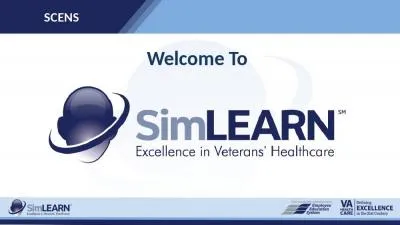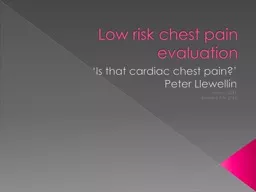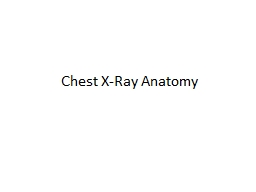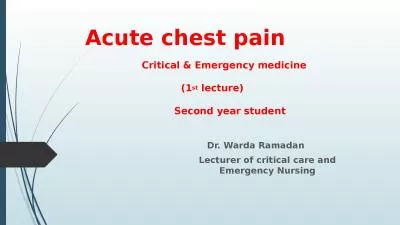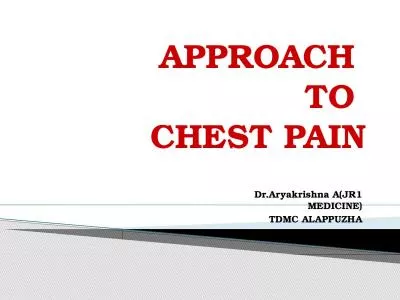PPT-SCENS Welcome SCENS Chest Pain:
Author : amelia | Published Date : 2022-02-10
Outpatient or Inpatient SCENS Learning Objectives Perform a focused assessment for the patient experiencing acute chest pain Implement facility specific chest pain
Presentation Embed Code
Download Presentation
Download Presentation The PPT/PDF document "SCENS Welcome SCENS Chest Pain:" is the property of its rightful owner. Permission is granted to download and print the materials on this website for personal, non-commercial use only, and to display it on your personal computer provided you do not modify the materials and that you retain all copyright notices contained in the materials. By downloading content from our website, you accept the terms of this agreement.
SCENS Welcome SCENS Chest Pain:: Transcript
Outpatient or Inpatient SCENS Learning Objectives Perform a focused assessment for the patient experiencing acute chest pain Implement facility specific chest pain protocol Demonstrate the appropriate responses to the first 5 minutes of cardiac arrest. ACUTE CHEST PAIN Junior Teaching. C. Brown August 2015. Objectives. Overview of the wide differential diagnosis of ‘chest pain’ which presents to the ED. Outline Aberdeen ED assessment and referral pathways for major ‘chest pain’ conditions (suspected or diagnosed):. Cardiovascular Emergencies. Many different presentations!. 45-year-old male with crushing . substernal. chest pain. 50-year-old female with a sudden onset of sharp chest pain and shortness of breath. A 55 year old male with a PMHx of Hyperlipidemia presented to the Emergency Department with a CC of Chest Pain. The patient described the onset of his Chest Pain beginning 8 hours prior while he was sitting in his car. He described the pain as a deep burning over the middle of his chest with radiation down his left arm. He endorsed that the pain was an 8/10 in severity, and he has experienced diaphoresis with associated SOB since its onset. He recalled experiencing a similar event 4 days prior when exerting himself at work. The pain had not relieved with rest and he could not recollect if anything specifically made the pain better or worse. . A non-invasive treatment options here go first before turning to more invasive procedures like minimally invasive surgery. Contact our physical therapy center by number (718) 998-9890. Employ facility specific infection control measures . Implement wound care orders. Communicate effectively when managing care for the patient with a wound. Learning Objectives. SCENS. Why?. Statistics for Veterans. SCENS. Learning Objectives. Complete a focused assessment on the patient presenting with signs and symptoms of a stroke. Initiate facility specific protocol for the patient presenting with an ischemic stroke. EMS Chief Manager. Perspective&Epidemiolgy. .More than . 5 . milion. . patient to the ED each year with complaints of chest . pain;this. represents nearly . 5% . of all patients seen in the ED in the . SCENS. Learning Objectives. Complete a focused assessment on the patient presenting with signs and symptoms of a stroke. Implement facility specific protocol to manage the care of the patient presenting with signs and symptoms of a stroke. ‘Is that cardiac chest pain?’. Peter . Llewellin. . August 2011. Revised July 2016. Background. Chest pain common presentation (10% ED visits. ). ACS only small proportion of this (~10. %). STEMI normally obvious . No. % 1 1,239 1,849 3,088 17.1 2 Tonsilitis, laryngitis, nasopharyngitis (common cold), sore throat, URTI 1,018 1,383 2,401 13.3 3 Fever / pain all over 550 786 1,336 7.4 4 Dermatitis, eczema , itchi Visible structures. 1. - Trachea. 2. - Hila. 3. - Lungs. 4. - Diaphragm. 5. - Heart. 6. - Aortic knuckle. 7. - Ribs. 8. - Scapulae. 9. - Breasts. 10. - Bowel gas. Normal chest X-ray anatomy. . Critical & Emergency medicine. (1. st. lecture). . . Second year student . . Dr. Warda Ramadan. Lecturer of critical care and Emergency Nursing. Dr.Aryakrishna. A(JR1 MEDICINE). TDMC . ALAPPUZHA. The . most common reasons for which patients present . for . medical attention at ED or an OP clinic. The evaluation of . non traumatic . chest discomfort is inherently challenging owing to the broad variety of possible .
Download Document
Here is the link to download the presentation.
"SCENS Welcome SCENS Chest Pain:"The content belongs to its owner. You may download and print it for personal use, without modification, and keep all copyright notices. By downloading, you agree to these terms.
Related Documents

